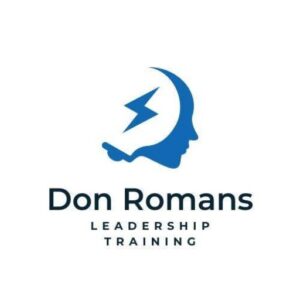In today’s changing economy and diverse corporate landscapes, understanding employee’s legal rights is more important than ever. In the United States, a wide array of legislation protects workers’ privileges and shields them from unfair practices. This comprehensive look into key aspects of employee rights will delve into legal protections, harassment and discrimination norms, wage and hour rights, privacy rights, and whistleblower protection. This extensive guide seeks to provide a clearer picture of the core rights all employees should be aware of and the legal institutions standby to safeguard them.
Overview of Legal Protections for Employees
Fair Labor Standards Act
The Fair Labor Standards Act (FLSA) is a federal law in the United States that sets standards for minimum wage, overtime pay, recordkeeping, and child labor. These standards affect full-time and part-time workers in the private sector and in federal, state, and local governments. Under the FLSA, most employees are entitled to a minimum wage and to overtime pay, which is one-and-a-half times their standard rate of pay for all hours worked beyond 40 hours in a work week.
Civil Rights Act
The Civil Rights Act specifically Title VII, is another central piece of legislation that significantly impacts employee rights. This law prohibits employers from discriminating against employees based on race, color, religion, sex, or national origin. Furthermore, the Act also protects employees from harassment, or unwelcome conduct, like offensive jokes, slurs, and physical assaults or threats, that are based on any of these characteristics.
Americans with Disabilities Act
The Americans with Disabilities Act (ADA) prohibits discrimination against individuals with disabilities in all areas of public life, including jobs, schools, transportation, and all public and private places that are open to the general public. Under the ADA, employers are required to provide reasonable accommodation to qualified individuals with disabilities, unless doing so would cause significant hardship or expense for the employer.
Occupational Safety and Health Act
The Occupational Safety and Health Act (OSHA) ensures that all workers have a safe and healthful working environment. Under OSHA, employers are mandated to provide their workers with a place of employment free from recognized hazards that are causing, or are likely to cause, death or serious physical harm. Employees have the right to confidentially file complaints with the OSHA if they believe their employer’s practices are not compliant with the Act.
Family and Medical Leave Act
Lastly, the Family and Medical Leave Act (FMLA) is a law that guarantees eligible employees up to 12 work weeks of unpaid leave each year with no threat of job loss. It also requires that employers covered by the law maintain the health benefits for eligible workers just as if they were working. The FMLA is designed to help employees balance their work and family responsibilities by allowing them to take reasonable unpaid leave for certain family and medical reasons, including serious illness, maternity, or to care for a newborn or newly adopted child.
The cornerstone of employment in the United States is a series of key legal frameworks that secure employee rights. These rights are crucial as they provide safeguards regarding appropriate compensation, job security, and the assurance of a working environment that is safe, inclusive, and free from discrimination.

Harassment and Discrimination
Delving into Employee Rights Towards Harassment and Discrimination
Central to employee rights are the measures put in place to shield individuals from unwanted harassment and discrimination in the workplace. The Equal Employment Opportunity Commission (EEOC), a federal authority, plays a vital role here by enforcing laws that prohibit discrimination on various grounds such as race, color, religion, sex, age, disability, national origin, or even genetic information. Attachment to these protected classes safeguards aspects of employment ranging from recruitment and termination to promotions, training, wage structure, and benefits.
The stipulations put forth by EEOC deem it unlawful to discriminate against a person, either a job applicant or an active employee, due to their membership in any protected class. Moreover, these guidelines stand firm to protect employees against any retaliatory action resulting from opposition to job discrimination, lodging of a complaint, or involvement in discrimination investigations or lawsuits.
Case Study: Racial Discrimination
Consider the case of Jamal K., who worked as a supervisor at a manufacturing company. Jamal noticed that white employees were routinely considered for promotions over equally or more qualified Black employees. He reported the pattern to upper management and shortly after found himself demoted to a lower position. After filing a complaint with the EEOC, an investigation revealed a pattern of racial discrimination within the company, validating Jamal’s claim. In this case, the company was held liable for facilitating a discriminatory work environment and retaliatory actions.
Harassment at Workplace and EEOC Guidelines
Harassment is a form of discrimination that includes unwelcome conduct based on race, color, religion, sex, national origin, disability, age, or genetic information. The offensive conduct becomes unlawful when it is so frequent or severe that it creates a hostile or offensive work environment, or results in an adverse employment decision, such as the victim being fired or demoted.
Consider the case of Emily R, who worked in a tech firm. She was consistently subject to offensive remarks about her gender by her colleagues, which created a hostile work environment. This behavior violated the EEOC guidelines, as it was both unwelcome and based on Emily’s sex. After filing a complaint, Emily was protected under EEOC guidelines from retaliation and the violators were held accountable for their actions.
Appreciating Your Employee Rights
Employee rights are an integral part of every workplace and being familiar with these is paramount for employees who may encounter discrimination or harassment. The Equal Employment Opportunity Commission (EEOC) advocates for employees to initially try to resolve the problems by engaging in a dialogue with the person involved or by reporting to a supervisor. If these initial steps don’t resolve the issue, filing a discrimination charge with the EEOC, a prerequisite step before a lawsuit, is the next course of action. As per EEOC rules, the charge must be filed within 180 days from the time the discrimination took place.

Wage and Hour Rights
Your Right to Equitable Compensation
In the United States, it is a legal requirement that employees are paid appropriate wages for their work hours. The bare minimum for non-exempt employees as per federal law is the federal minimum wage. As of 2022, $7.25 per hour is the federal minimum wage. It should be noted though, that several states have set their minimum wage above this federal rate, and employees covered by both federal and state minimum wage laws have a right to the higher of the two.
The Fair Labor Standards Act (FLSA) is the federal legislation that dictates minimum wage, overtime compensation, and child labor regulations. This law is applicable to both private and public sectors. As per the FLSA, employers are obligated to pay their employees the prevailing wage for all hours worked. Furthermore, any work done exceeding the standard 40-hour workweek is classified as overtime and the employee should be compensated at a rate at least one and a half times their regular pay for these extra hours worked.
Understanding Tips and Gratuities
Tips are customary in certain industries, particularly those involving customer service such as restaurants and hotels. The FLSA allows employers to consider tips as part of wages, but employers must pay a direct wage of at least $2.13 per hour if they claim a tip credit against their minimum wage obligation. If an employee’s tips added to the employer’s direct wages do not equal the minimum hourly wage, the employer must make up the difference. Some states have different rules and may require employers to pay tipped employees a minimum wage higher than $2.13.
Right to Regular Pay
Employers are required to establish regular paydays and to post notices that provide information about the time and place of payment. If an employer fails to pay an employee as promised or within the agreed time frame, they may be in violation of the FLSA. Each state also has regulations regarding the frequency of pay, with some states requiring weekly or bi-weekly payments to employees.
Breaks and Rest Periods
Federal law does not necessarily require employers to provide lunch breaks or rest periods. However, when employers do offer short breaks (5 to 20 minutes), federal law considers the breaks as compensable work hours that should be included in the sum of hours for the workweek. On the other hand, meal periods (typically 30 minutes or more) are not required to be paid as working time.
Understanding Wage Issues
Every employee has the right to a fair wage for their work. The Department of Labor’s Wage and Hour Division (WHD) is a key resource to utilize if issues related to non-payment or underpayment occur. Notably, complaints can be filed confidentially with the WHD, thereby protecting the employee’s identity to the greatest extent possible.
Typical wage issues can include unauthorized wage reductions, checks bouncing, lack of overtime payment, failure to meet minimum wage standards, or withholding the final paycheck. It’s advisable for employees to note all work hours, rate of pay, and any occurrences of non-payment, while compiling evidence of these potential violations.

Right to Privacy and Personal Rights
Privacy Rights in Workplace Surveillance
Workplace surveillance is a common practice used by companies to monitor productivity and safeguard their interests. Nevertheless, employees have rights to privacy that must be respected. Within an office setting, employers may track computer usage, emails, and phone calls, but there must be reasonable, implicit boundaries. This restricts the employer from inspecting personal belongings, such as handbags or briefcases, and implies that surveillance cameras should not be installed in intimate spaces like restrooms or changing areas. Any audio surveillance should be limited, not extending to private, non-work related discussions.
Drug Testing
Companies often employ drug testing as a safety measure and a way to promote a drug-free workplace. The laws surrounding this practice can vary widely between states, but generally, employers can conduct random drug testing, pre-employment testing, and testing based on reasonable suspicion. However, drug tests should not be selectively administered to discriminate against certain individuals or groups.
Personally Identifiable Information (PII)
Employers necessarily hold a significant amount of personally identifiable information (PII) about their employees. Laws such as the Privacy Act hold them responsible for protecting this data. They should have clear policies stating what information they collect, how they use it, and how it’s protected. Employees have a right to know what data their employers have, and in many cases, to correct any errors in this data.
Social Media Content
The boundaries between employees’ professional and personal lives have become blurred with the pervasive use of social media. Some employers may wish to monitor the social media activities of their employees. But employers should be aware of the National Labor Relations Act (NLRA), which protects employees’ rights to engage in “concerted activities,” such as discussing wages and working conditions. Employers should not take any adverse action against an employee based on their lawful off-duty activities, including social media posts that do not negatively affect the company.
Securing Employee Rights
It’s imperative for employees to take proactive measures to safeguard their rights. This can be achieved by gaining comprehensive knowledge about their company’s regulations regarding surveillance, drug testing, handling of information, and social media guidelines. Should an employee feel their rights have been infringed, they have the option to lodge a complaint with the Occupational Safety and Health Administration (OSHA), the company’s privacy officer, or their state’s labor department. Legal action is another viable recourse, yet resolving these matters through open conversations between the employee and employer is always the preferred approach. This allows for a balanced resolution that ensures the company’s security while respecting the employee’s rights.

Whistleblower Protection and Retaliation
Grasping the Whistleblower Protection Act
An integral part of employee rights is the Whistleblower Protection Act that was introduced in 1989. This federal law guarantees U.S employees, contractors, or subcontractors against any form of retaliation in the event they report unlawful or unethical practices within their workplace. Protection under this act extends to those who uncover and report violations of law, rule, or regulation; gross mismanagement; misuse of funds; abuse of authority; or substantial, specific threats to public health and safety.
If an employee feels they have been unfairly treated or retaliated against for whistleblowing, they can file a complaint with the Office of Special Counsel (OSC). The OSC is responsible for investigating the complaint and if proven, can enforce corrective measures. Moreover, if the OSC identifies reasonable grounds to assert that retaliation has taken place, it can potentially halt the retaliatory action in its tracks.
Workplace Retaliation: A Growing Concern
Workplace retaliation poses a real and significant concern. It occurs when an employer punishes an employee for an action that’s permitted by law, but which the employer wants to discourage. For example, an employer might retaliate by firing or demoting an employee, or by giving the employee unfavorable assignments or shifts. The fear of retaliation can make employees hesitant to stand up against unlawful or harmful practices.
Reducing workplace retaliation promotes a healthier, more transparent workplace environment. Encouraging and protecting those who report wrongdoing is critical to organizational integrity and public trust. Employees should be aware that retaliation for whistleblowing is illegal and that they have fundamental rights to expose unlawful or unethical behavior without fear of adverse consequences.
Heading Off Retaliation Before It Happens
Both employers and employees can take steps to prevent workplace retaliation. Employers can foster a culture of openness, implement policies that encourage speaking out, and ensure that they respond appropriately and legally to whistleblower claims. Training supervisors and managers about what constitutes retaliation can also help mitigate these issues.
As for employees, they can protect themselves by documenting any instances of possible retaliation, keeping detailed records of their job performance, and getting a clear understanding of their company’s anti-retaliation policies. Seeking legal counsel can also provide employees with advice tailored to their specific situations.
Whistleblowing and the protection for those who take such brave steps is fundamental to preserving the integrity not just of individual businesses, but of the economy as a whole. An informed workforce aware of its rights and the mechanisms in place to enforce them is key.

Employee rights encompass various facets of professional life, from legal protections and fair remuneration to personal privacy and the ability to safely report unethical behavior. Empowering knowledge about these rights and protections promotes a healthy, respectful, and compliant workplace environment. By understanding the parameters set by legislations like FLSA, Civil Rights Act, OSHA, Americans with Disabilities Act, and the Whistleblower Protection Act, employees can secure their rights and seek recourse when needed. In this evolving corporate world, such enlightenment not only equips individuals to navigate the complexities of employment but also inspires a culture of respect for human rights in workplaces.

